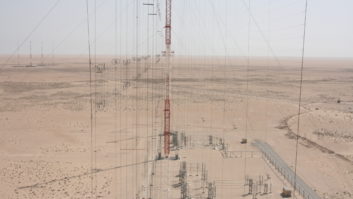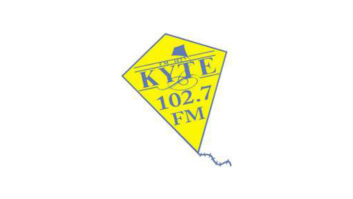
The author is general manager of Five Forty Broadcasting Co. in Sylva, N.C.
After reading Randy J. Stine’s article “AM Advocates Watch and Worry” in the Sept. 30 issue, I ask myself: “What is an independent and local broadcaster to do?”
As correctly stated in the article, an AM station must stay active in order for the broadcaster to have access to an FM translator. In our case, the owner of the real estate upon which the broadcast tower has been located for over 50 years is selling the property for commercial development. Fortunately, less valuable real estate was found and a new tower is to be erected by the end of the year.
[Read: Special Report: AM Advocates Watch and Worry]
If the trend from Stine’s article is correct, the new AM tower will be obsolete before the construction is complete. Having to make this investment is a difficult choice considering the bleak future for AM and perhaps all radio.
It is a vicious cycle. Audio quality deteriorates, then listeners and advertisers find something else. Unfortunately, AM stations that are doing it right tend to get lumped in with those who are not.
Should the AM decide to make the move to all-digital, the cost for upgrading the ground system, tower and transmitter would be substantial and risky.
In my opinion there needs to be a nationwide effort to upgrade the technical quality of AM stations, perhaps something along the line of public-private partnerships such as is happening with rural broadband.
Recently an engineer described to me how he did minor repairs to a station’s ground radials and retuned the ATU and turned a horrible AM signal into one with very good sound and much improved coverage.
Perhaps AM stations with 500 watts or less on high frequencies could be allowed to go silent if their FM translator reaches a sufficient portion of their audience and help remove some of the nighttime clutter, even from 35 watts.
We all have likely become annoyed at background interference when we tried to listen to a baseball game or something from a low-frequency AM hundreds of miles away.
As the rebuilding of AM produces a much better product, owners and associations then must promote AM. For AM stations with an FM translator, the programming is the same, so the defining difference is audio quality.
Finally, corporate owners should divest themselves of underperforming AM stations and provide willing local broadcasters the opportunity to do local radio again. Possibly nonprofits could operate those broadcast properties as a commercial enterprise and rid themselves of low-power FM and all its limitations or possibly, with approval, allow the LPFM to become a translator for the AM station.
Submit letters to the editor at radioworld@futurenet.com.







